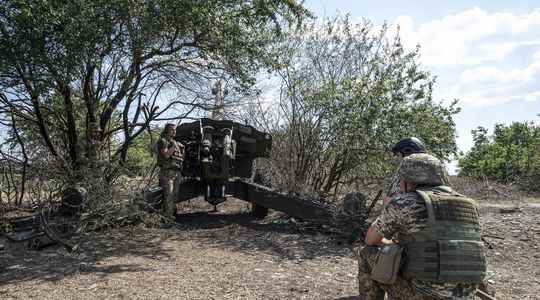After the all-out Russian invasion of February 24, the war in Ukraine entered a second phase. Withdrawing its troops from the north of the country, Moscow had concentrated them on the Donbass in the spring, managing to take control of the Luhansk region in early July, thanks to the deluge of fire from its artillery. Now the conflict appears to have entered a new phase with the launch of a Ukrainian counter-offensive on the southwestern front on August 29. For the first time, kyiv is taking the initiative, without it being known at this stage whether its efforts will be conclusive.
The ambition of the Ukrainians? The recapture of Kherson, a city easily conquered by the Russians in the first days of the conflict, and of the entire occupied zone on the western bank of the Dnieper river. The Ukrainian army, in this respect, must meet a double challenge: repel the Russians, but without destroying inhabited areas – the tactics pursued by the Kremlin to advance in the Donbass.
The season facilitates the operations of the Ukrainians. Summer and dry ground play in their favour, before the autumn rains and the cold complicate the maneuvers of the armored vehicles. Unlike the Russians, forced to stay on the roads during maneuvers in February-March, in the middle of winter, they can cut across fields. Their adversaries – 20,000 Russian soldiers would be positioned north of the Dnieper – therefore find themselves having to defend larger spaces.
“Their attack on several axes, in the open countryside, allows them to seek intervals to produce breakthroughs”, notes General Dominique Trinquand, military expert and former head of the French mission to the UN. Objective: surround the Russians, after heavy artillery fire, to push them to withdraw. In an analysis published in JulyLawrence Freedman, Emeritus Professor of War Studies at King’s College London, believed that it was “possible to make Russian positions so uncomfortable that their forces must withdraw to be preserved”.
The risk of heavy civilian casualties
Such progress, if realized, could lead the Ukrainians to the gates of Kherson, their main goal. The rest will then depend on the tactics adopted by the Russians, as it seems unlikely that the Ukrainians will choose to shell the city.
Will they retreat there with the intention of defending it at all costs? “It is possible, even if it seems complicated for them to fight in a city that is not theirs, where the population is hostile to them, argues Léo Péria-Peigné, arms and forecasting researcher at the Center IFRI security studies. A Stalingrad on the Dnieper seems unlikely. On the other hand, if there is street fighting like in Mariupol, it can lead to very heavy civilian casualties, especially if the Russians are hiding in homes of civilians used as human shields.”
In this respect, the help provided by the local resistance could play an important role. “Kherson is more or less won over to the Ukrainians, their army can rely on an intelligence network inside the city and a network of potential armed resistance, advances General Trinquand. The population can contribute to operations, like this which happened during the liberation of Paris in 1944 by General Leclerc’s 2nd Armored Division.”
If they manage to repel the Russians, the Ukrainians will also have to make a crucial choice: whether or not to bomb the crossing points on the Dnieper, through which enemy combatants can flow back. They have already destroyed the major bridges over this river several hundred meters wide and daily pound the barges and pontoons installed by Moscow. “It will depend on whether or not they want to take as many prisoners as possible or take as much material as possible from the Russians”, specifies Léo Péria-Peigné. For Vladimir Putin’s army, such a scenario would be a blow.
